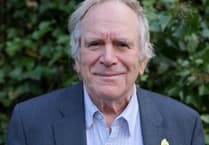THE FOREST’S LOCAL PLAN – Where will all our houses go?
The government wants to build 1.5million homes by the end of their term in 2029. It believes there is an acute housing crisis and, like the former Prime Minister Liz Truss, believes growth at any cost is justifiable to ‘repair the economy’. It wants to challenge environmentalists by taking apart the Wildlife and Countryside Act 1981 and introducing the Planning and Infrastructure Bill, currently going through the Lords. This new act threatens nature recovery and local democracy by curtailing the powers of Planning Committees and by delegating decisions to officers without reference to our elected representatives. The government has chosen to ignore the advice of countryside charities, local authorities and many others - even the construction industry, which has neither the staff nor resources to build this number of properties at scale in the time available.
It is estimated that in England there are 1.4 million homes for which planning has been received that are unbuilt as developers ‘bank’ land awaiting a rise in its value. There are 722,000 empty homes in England, with at least 600,000 second homes and over 200,000 holiday rentals partly occupied. Government has not addressed these shortcomings, nor has it enabled local authorities to do so.
To support its growth agenda the government has required all district councils to produce a Local Plan prior to local government reorganization in 2028. It has used the National Planning Policy Framework, introduced by the previous conservative administration, to compel all district councils to increase the proposed number of new houses in line with a new formula. In the case of the Forest of Dean this means increasing the number of new houses from 6,600 to 12,000 over the plan period expiring in 2045.
We are faced with a dilemma not of our making. If we do not allocate 12,000 houses in our local plan it will be rejected by the Planning Inspectorate next year. Without an approved local plan developers will have a free for all as they successfully progress speculative planning applications that we cannot defend.. ‘Build on brownfield sites’ I hear you say. But many of our brownfield sites are toxic and unstable. Most councillors do not wish to build on greenfield sites. Against our wishes and better judgement we may have to permit developers to build there if we are to meet these unrealistic housing targets.
We consulted in the summer asking the public for their views on the most appropriate strategy for new housing provision. Five options were proposed for consideration. The planning team are to present the findings to Full Council on 13th November when Council members will vote whether to move to the next stage of the process, which is to produce a revised draft local plan. This will take into account public’s wishes as far as possible in line with our sustainable development strategy.




.jpeg?width=209&height=140&crop=209:145,smart&quality=75)
Comments
This article has no comments yet. Be the first to leave a comment.